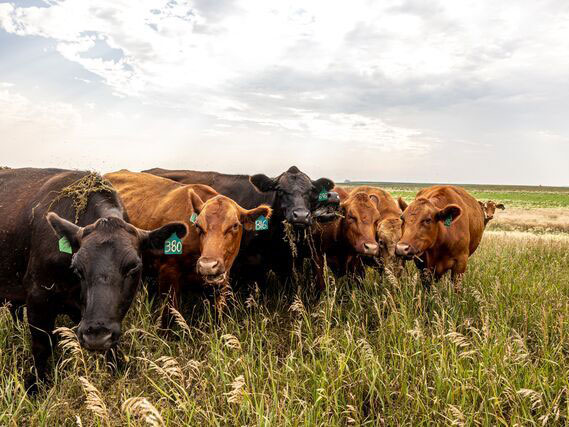Strategic Partnerships for Resilience: Bagley Risk Management
Strategic Partnerships for Resilience: Bagley Risk Management
Blog Article
Comprehending Animals Risk Security (LRP) Insurance Policy: A Comprehensive Overview
Navigating the realm of livestock risk defense (LRP) insurance can be a complex undertaking for numerous in the farming market. This type of insurance coverage uses a safety web versus market changes and unforeseen conditions that could influence livestock manufacturers. By comprehending the intricacies of LRP insurance policy, producers can make educated decisions that might guard their procedures from monetary risks. From just how LRP insurance coverage operates to the various insurance coverage options available, there is much to reveal in this extensive overview that could possibly form the method animals producers come close to risk administration in their services.

Just How LRP Insurance Coverage Works
Periodically, comprehending the technicians of Animals Risk Security (LRP) insurance can be complicated, however damaging down just how it functions can give clarity for breeders and farmers. LRP insurance coverage is a threat monitoring tool developed to safeguard animals manufacturers against unforeseen cost decreases. It's essential to keep in mind that LRP insurance policy is not a revenue warranty; rather, it concentrates only on rate threat defense.
Qualification and Protection Options

When it concerns protection choices, LRP insurance uses producers the versatility to pick the protection degree, insurance coverage period, and endorsements that ideal suit their threat administration requirements. Insurance coverage levels generally vary from 70% to 100% of the anticipated ending value of the insured animals. Manufacturers can also choose coverage periods that straighten with their production cycle, whether they are insuring feeder cattle, fed livestock, swine, or lamb. Recommendations such as rate risk protection can additionally tailor insurance coverage to protect against negative market variations. By recognizing the qualification standards and protection choices readily available, animals manufacturers can make informed decisions to take care of threat efficiently.
Pros and Disadvantages of LRP Insurance
When reviewing Livestock Threat Protection (LRP) insurance, it is vital for animals producers to weigh the benefits and negative aspects fundamental in this threat monitoring device.

One of the key advantages of LRP insurance is its capacity to offer protection against a decline in animals rates. In addition, LRP insurance supplies a level of flexibility, permitting producers to tailor protection levels and plan periods to match their details requirements.
Nevertheless, there are likewise some disadvantages to take into consideration. One limitation of LRP insurance coverage is that it does not safeguard against all types of dangers, such as illness outbreaks or all-natural calamities. In addition, costs can this page often be expensive, particularly for manufacturers with huge animals herds. It is critical for manufacturers to very carefully analyze their specific threat exposure and monetary situation to establish if LRP insurance policy is the ideal threat administration device for their operation.
Comprehending LRP Insurance Premiums

Tips for Taking Full Advantage Of LRP Benefits
Taking full advantage of the benefits of Livestock Danger Defense (LRP) insurance coverage needs critical planning and proactive threat management - Bagley Risk Management. To maximize your LRP insurance coverage, take into consideration the adhering to suggestions:
Frequently Analyze Market Problems: Stay informed regarding market fads and price fluctuations in the livestock sector. By monitoring these elements, you can make educated choices concerning when to acquire LRP coverage to safeguard against prospective losses.
Set Realistic Protection Degrees: When picking coverage levels, consider your production costs, market value of livestock, and possible threats - Bagley Risk Management. Establishing practical insurance coverage degrees makes certain that you are sufficiently safeguarded without overpaying for unneeded insurance coverage
Diversify Your Coverage: Rather than relying only on LRP insurance policy, take into consideration expanding your danger management approaches. Combining LRP with various other danger management tools such as futures contracts or options can provide thorough insurance coverage versus market uncertainties.
Review and Readjust Insurance Coverage Consistently: As market problems change, occasionally assess your LRP protection to guarantee it aligns with your current risk exposure. Readjusting coverage levels and timing of acquisitions can help maximize your risk protection method. By adhering to these ideas, you can make the most of the advantages of LRP insurance policy and safeguard your animals procedure versus unexpected risks.
Final Thought
Finally, livestock danger protection (LRP) insurance policy is an important device for farmers to handle the economic threats connected with their animals procedures. By recognizing how LRP functions, qualification and protection alternatives, as well as the benefits and drawbacks of this insurance coverage, farmers can make informed decisions to shield their incomes. By very carefully considering LRP premiums and applying strategies to take full advantage of benefits, farmers can alleviate potential losses and make certain these details the sustainability of their operations.
Livestock manufacturers interested in acquiring Animals Risk Protection (LRP) insurance policy can my review here check out a variety of qualification standards and insurance coverage choices customized to their details animals procedures.When it comes to coverage options, LRP insurance coverage supplies producers the flexibility to select the protection degree, coverage period, and endorsements that best fit their danger administration requirements.To grasp the ins and outs of Animals Threat Defense (LRP) insurance fully, understanding the factors influencing LRP insurance premiums is crucial. LRP insurance premiums are determined by various elements, including the protection degree picked, the expected cost of livestock at the end of the coverage duration, the type of animals being insured, and the length of the coverage duration.Review and Change Coverage Regularly: As market conditions transform, occasionally review your LRP coverage to guarantee it lines up with your present risk direct exposure.
Report this page